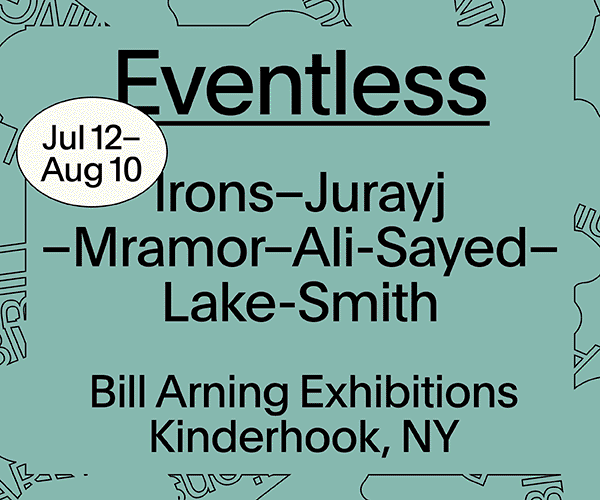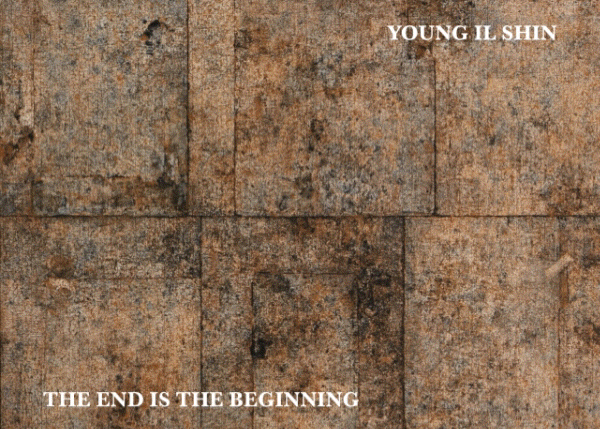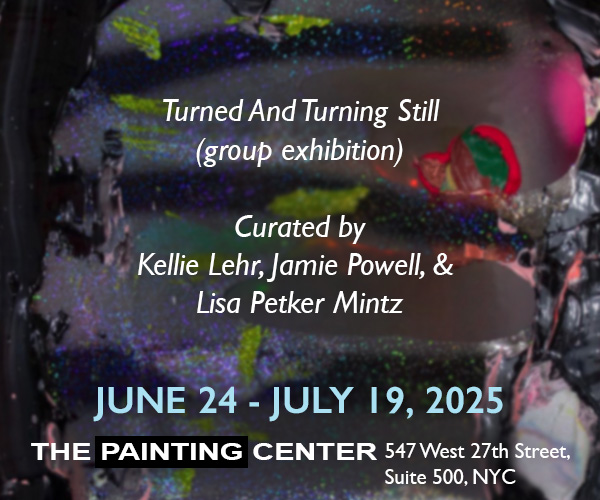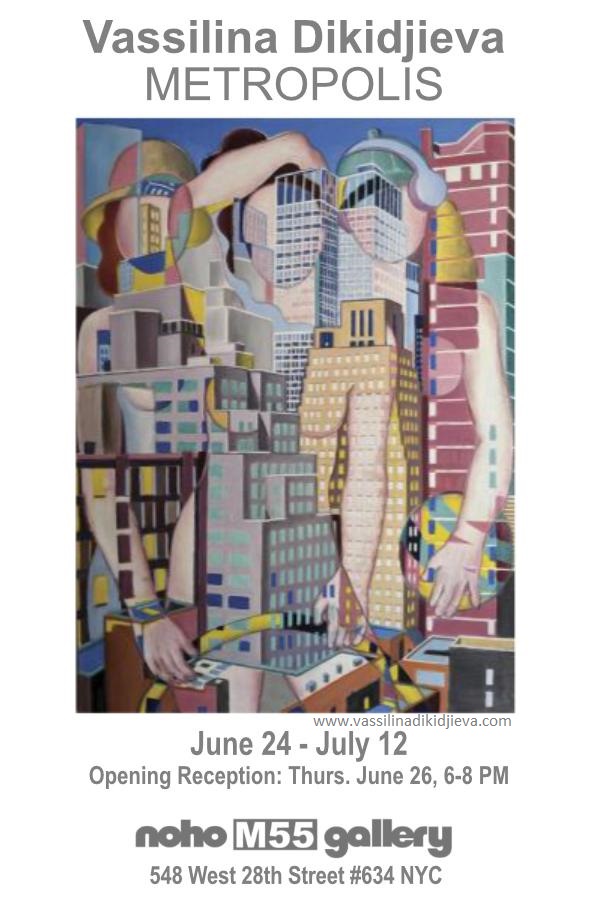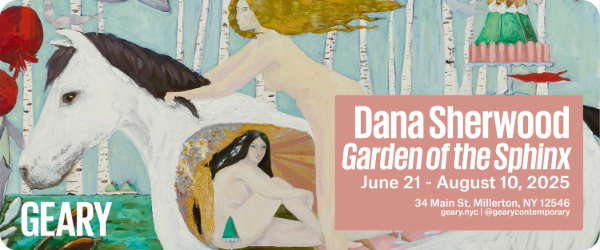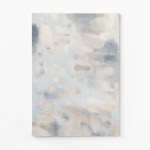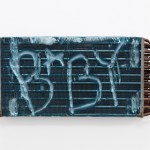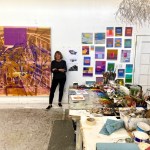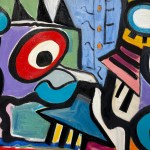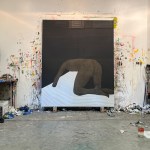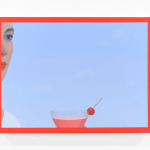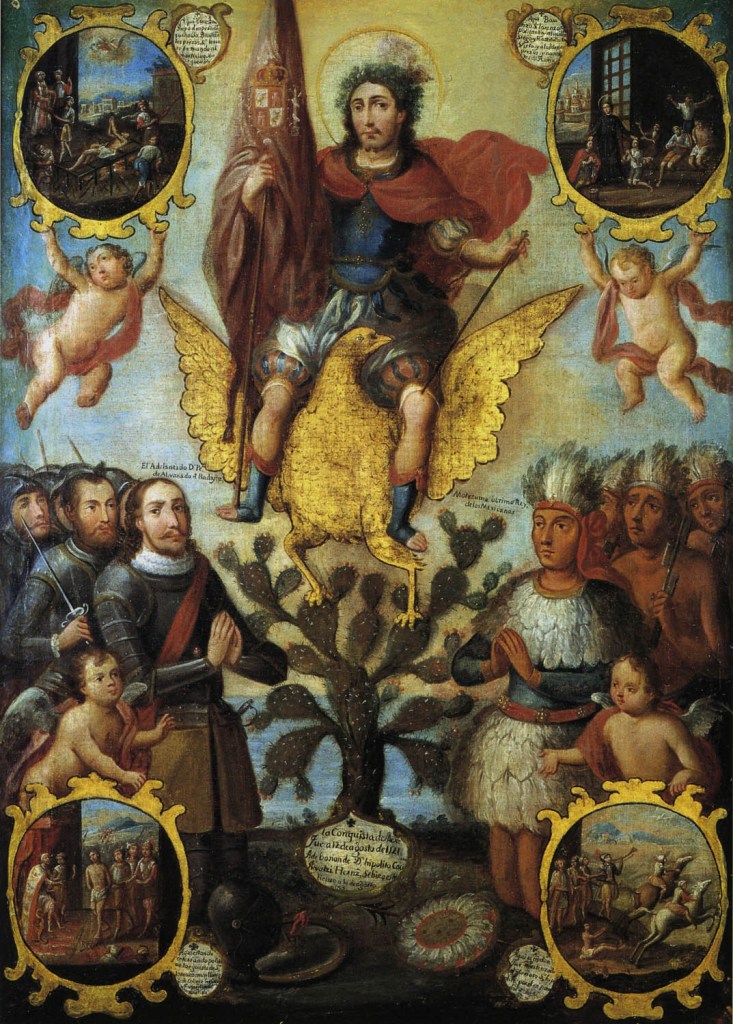
Contributed by David Carrier / When the Metropolitan Museum of Art recently rehung its permanent European collection, the galleries devoted to Spanish art included an abundant selection of work from “New Spain,” as the vast Spanish empire was known during the colonial period. From 1521 to 1821, its territory included, among much more, what is now Mexico, Central America, and the US Southwest. Much of the art consisted of sacred baroque painting – arguably the first truly international art style. “Saints & Santos: Picturing the Holy in New Spain,” on view at the New Mexico Museum of Art, does it justice.
An immense body of Catholic visual art emerged from Spain’s western lands. Drawn from American and Mexican public and private collections, the show offers the anonymous San Hipólito y las Armas Mexicanos (1764), in which the figure of Christ rests on a golden eagle as cherubs on either side present scenes from his life. Below the eagle is a cactus, with Spaniards standing on the left and Native Americans on the right. In Juan Rodriguez Juárez’s Guadalupe with Saints, including Gregorio Lópex (1720), comprising eight shaped panels, holy figures surround the Virgin. Cristóbal de Villalpando’s The Mystic Marriage of St. Rose of Lima (1700) has God accompanying the Virgin and Christ in Heaven, flanked by adoring saints.
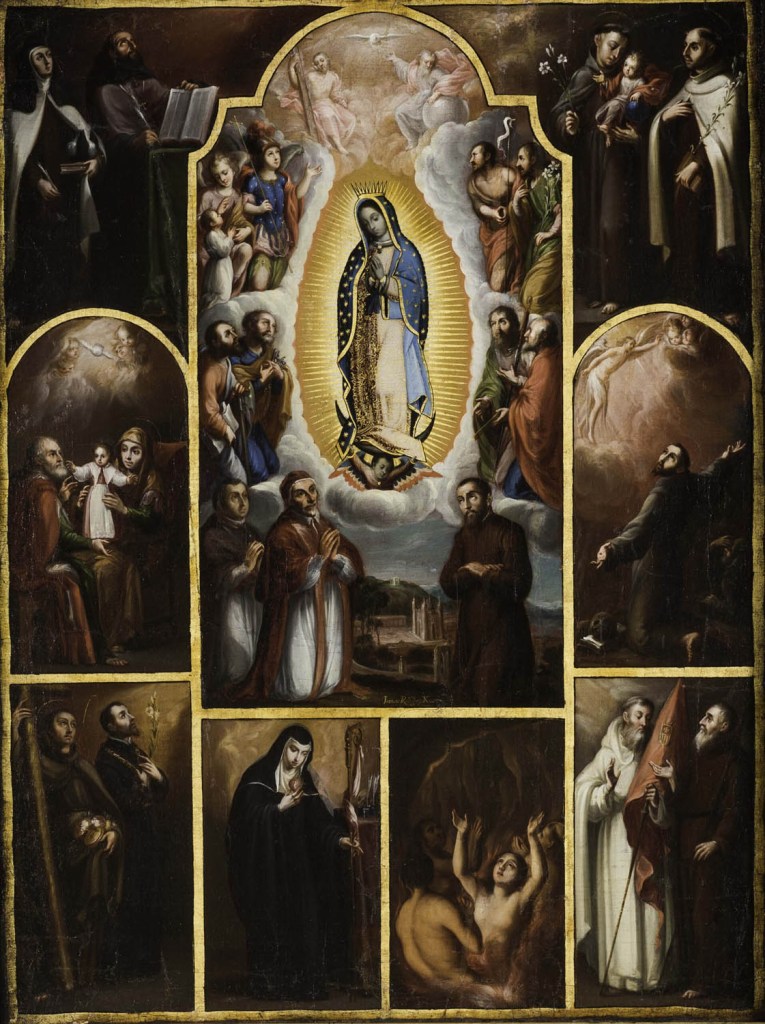
By the lofty standards of Velazquez and other canonical baroque artists of Spain – a high bar – the work here is technically mediocre. The coloring and drawing are sometimes awkward, the figures ill-proportioned, and the perspective inconsistent. The ranking Spanish artists didn’t make the long, perilous journey into New Spain, and their work was seldom exported. Painters born or working in the colonies were left to study engravings. A generation or two ago, art historians and critics might have labeled their work, harshly and dismissively, “provincial.”
From a less severe perspective, the paintings track as pastiches of canonical European masterpieces, with elements appropriated from Raphael, Correggio, and Murillo. But even that assessment fails to recognize and appreciate their distinctive and admirable qualities. Like Catholicism itself, this strain of visual art developed in response to novel spiritual and visual settings. As Willa Cather noted about New Mexico itself in Death Comes for the Archbishop, from the flat red sea of sand rose great rock mesas, generally Gothic in outline, resembling vast cathedrals… The sandy soil of the plain had a light sprinkling of junipers, and was splotched with masses of blooming rabbit brush – that olive-colored plant that grows in high waves like a tossing sea, at this season covered with a patch of bloom, yellow as gorse, or orange like marigolds.
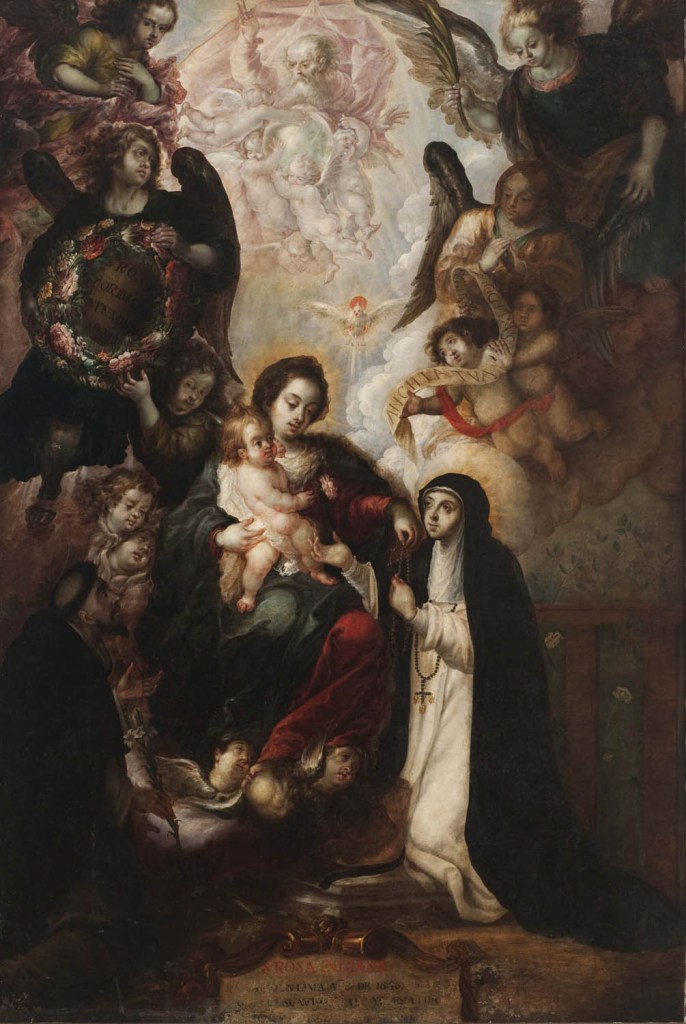
So too, are the historical and cultural contexts of New Spain different from that of Spain itself. You would not likely find a golden eagle and a cactus in a Spanish altarpiece. And the eight shaped panels of Guadalupe with Saints seem to be a local invention.

For creditable political and aesthetic reasons, art historians and critics now hesitate to make value judgments based on provinciality and have become skeptical about evolutionary models of art history. While regional painters of the Spanish colonial era may have lacked the classical skill of their Spanish contemporaries, the quality of their work is on a par with that of a many present-day figurative artists, who do not always privilege traditional technical facility. That may explain why I was so charmed by Cristóbal de Villalpando’s The Mystical City of God (1706), a tall picture in which a city lies beneath a busy version of Heaven featuring the Father, the Son, the Holy Ghost, and a multitude of saints. Forced to devise their own compositions, the best of these painters created some remarkably original and engaging images.
“Saints & Santos: Picturing the Holy in New Spain,” New Mexico Museum of Art, 107 West Palace Avenue, Santa Fe, NM. Through January 12, 2025.
About the author: David Carrier is a former professor at Carnegie Mellon University; Getty Scholar; and Clark Fellow. He has published art criticism for Apollo, artcritical, Artforum, Artus, and Burlington Magazine, and has been a guest editor for The Brooklyn Rail. He is a regular contributor to Two Coats of Paint.

